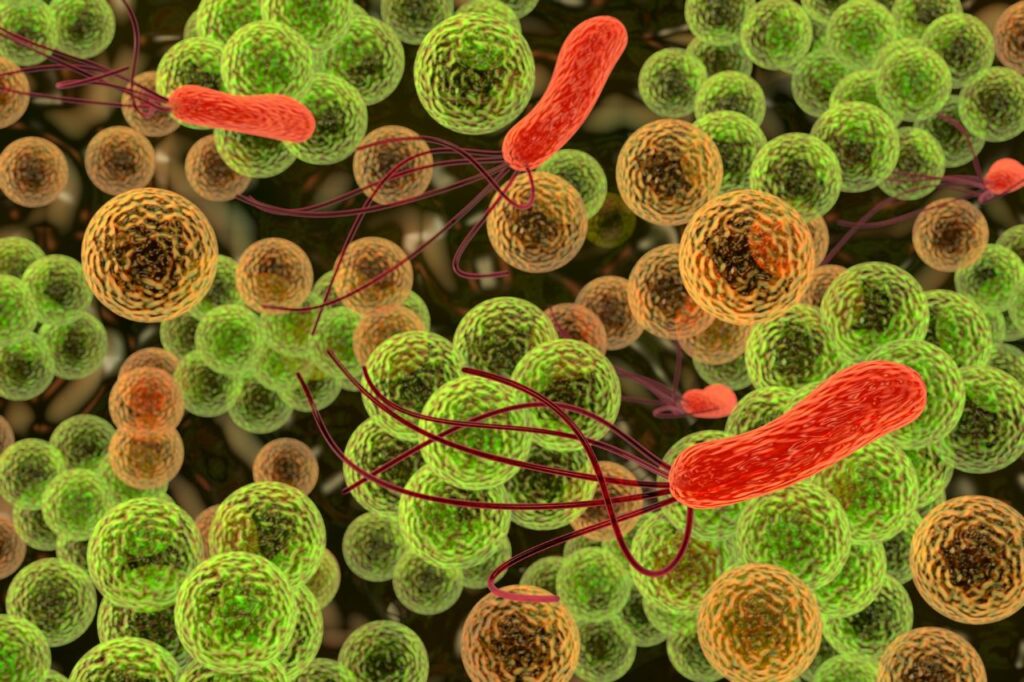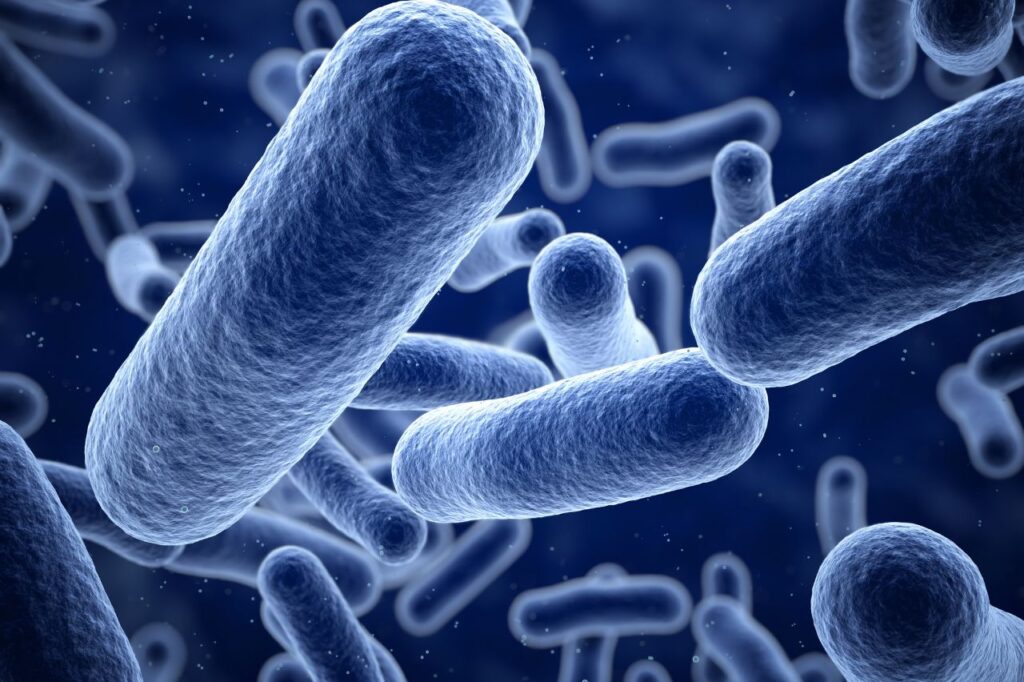Table of Contents
ToggleHow Does an Anaerobic Septic System Work?
A septic system is used to treat wastewater and consists of three main parts: the tank, drain lines, and soil treatment area. The tank stores wastewater and any solid materials that cannot be carried along in the water. The drain lines then route the water out of the tank to the soil treatment area where it can receive natural filtration. This area is also referred to as a drainfield or leach field.
The size of septic tanks for a residential home can vary greatly depending on the number of people living there. Typically, a three-bedroom, two bathroom home will require a tank of around 1000 gallons in capacity. Newer tanks need to have two chambers, while older ones may contain just one. These tanks are usually created from concrete, but other materials can also be used.
A septic tank is an underground sewage system where waste flows into and is stored for natural breakdown by anaerobic bacteria. The wastewater that enters the tank is divided into three layers. The bottom layer is known as the sludge layer, which is composed of heavier solids that settle to the floor. At the top, lighter materials including fats and oils form a separate scum layer. In between these two layers stands a “clear” area for liquid waste. Bacterial digestion breaks down these wastes over time in anaerobic conditions.
Septic tanks rely on the presence of certain microorganisms to decompose the sludge inside. Anaerobic bacteria in particular are essential for this job and thankfully, a lot of them can be found in human intestines. Every time a toilet is flushed, more bacteria is added to the septic tank with waste, meaning no other additives are required. But this isn’t enough to break down all of the material contained within, so tanks have to be emptied out every few years.
A septic tank baffle is an important component in the proper functioning of a septic system. The baffles are installed on the discharge side of the tank and act as a barrier to prevent solids from entering the drain field. Baffles help reduce solid matter from exceeding levels that could potentially clog or harm the system’s efficiency. As wastewater enters and pushes against the baffle, it forces equal amounts out into the drainage field through a distribution box and perforated drain lines.
Soil is a highly diverse habitat to an impressive variety of life forms. Everything from plants, bacteria, fungi, and protozoa to larger creatures such as mites, earthworms and insects can be found in the soils. These organisms play a critical role in waste-water management by helping to release nutrients, reusing them within the soil and eliminating pollutants from water sources. Minerals and metals attach themselves to soil particles which effectively removes them from wastewater before they enter groundwater reserves.

How to Properly Maintain your Anaerobic Septic System
Proper maintenance is key to a healthy and functioning septic system, which can help you avoid costly repairs. Have the tank inspected and pumped at least every 3-7 years to ensure it’s in good working order, or immediately if you don’t know when the last time it was serviced. Do not drive or park over the tank or drainfield as this may damage or collapse components.
Additionally, do not use sinks or toilets as trashcans – dispose of oils, paper towels, hygiene products and other such materials into an appropriate bin instead. Be cautious when running garbage disposal units too – eggshells, bones and vegetables put strain on your septic system as they’re harder for them to digest.
When planning landscaping around the septic system account for tree and shrub roots that could grow into the drain lines and tanks. Use water efficiently in your household too, by fixing leaking faucets or toilets, and avoiding overtaxing your system with multiple tasks at once.
Are you noticing any of the following signs that your septic system may be failing?
Sluggish draining from sinks and toilets, plumbing backups, gurgling sounds coming from the plumbing, unpleasant odors in the house or yard, wet or mushy soil in the yard, standing water that is greyish in color, faster and greener grass growing in one particular area of the yard, and bacteria in well water. If so, then it’s time to get your septic system checked out!
Identifying signs of a failing septic system is important to ensure proper and safe disposal of household wastewater. If you notice any of the following issues, it may be time to get your septic system checked out: strong odors near the tank or drain field, sewage backups in the house or yard, slow draining sinks and toilets, gurgling drains, soggy wet spots in the yard adjacent to the tank/drain field and/or an unusually lush green growth above the tank/drain field.
Contact your local health department for help in identifying potential problems and contracting a qualified technician for repairs or modifications that must be permitted by and inspected with the health department. If ignored, this can lead to serious environmental contamination risks as well as declines in property values. Investing in proper maintenance of your septic system is critical in protecting public health and our environment.

Anaerobic Septic System Cost Conciderations
Installing an anaerobic septic system can be expensive, but it’s one of the most efficient and sustainable ways to treat wastewater. With this guide, you can get a full breakdown of anaerobic septic system costs and explore different options to make sure you get the right system for your home.
Learn the Costs of Common Components
Many anaerobic septic system costs are directly related to the type of components and materials used. Plumbing components, pumps, baffle barriers, aeration systems, control panels, tanks and more can all add up in cost. Additionally, different types of subsurface drainage systems or dispersal media can also affect the total price you’ll have to pay. Become familiar with these parts so you’re prepared when consulting with your local septic contractor.
Calculate System Installation Fees and Septic Tank Pumps
When you’re attempting to calculate the total cost of your anaerobic septic system, you’ll need to factor in installation fees. Septic tank pump fees will also come into play if your area requires regular maintenance and pumping of wastewater. Local contractors may charge a flat rate or an hourly fee depending on the complexity of the job, so make sure to compare their estimates against each other before deciding on one.
Analyze Maintenance and Repair Fees
You’ll need to factor in the long-term costs associated with maintaining and repairing your anaerobic septic system, as well. The pump out schedule can vary depending on the size of the tank, type of soil in the area, and number of people using the system. You should also be prepared to pay for repairs or replacements if any components fail over time. Make sure to ask about maintenance requirements when you’re considering different systems and weigh them against your budget before making a final decision.
Consider Local Regulations Impacting Septic System Costs
Depending on where you live, it’s likely that there are local regulations impacting the type of system you can install and the total cost. Regulations will often set out the type of system allowable and in some areas require specific design features- all of which will add to the cost. Make sure to check with your local department of health or other regulatory body before deciding on a system to give yourself an accurate idea of what you’ll be looking at in terms of costs and installation.
Converting an Anaerobic Septic system to an Aerobic Septic System
Converting an anaerobic septic system to an aerobic one can be a complicated and time-consuming process. Before you start, make sure to review the pros and cons of each type of system and understand the necessary steps required to complete the conversion. In this guide, we’ll cover everything you need to know about switching from an anaerobic to an aerobic septic system.
What is an Aerobic Septic System?
An aerobic septic system is a type of wastewater treatment system in which air and bacteria are used to break down solid wastes, wastewater solids and other pollutants. Unlike an anaerobic system, aerobic systems require electricity to pump oxygen into the sewage, creating a turbulent environment that helps remove deposits from the walls of pipes and reduces sludge buildup. In addition, aerobic systems often employ mechanical filters to ensure water quality before discharge.
What Are the Benefits of an Aerobic Septic System?
Converting to an aerobic system can offer several benefits. Aerobic systems typically process waste more quickly than anaerobic systems, meaning less potential for backups and blockages. They also operate more efficiently, allowing sewage to penetrate the soil at a much faster pace. This reduces the likelihood of unpleasant odors and other environmental consequences, while improving water quality downstream. Additionally, compared to traditional septic systems, aerobic systems require far less maintenance—allowing you to save time and money in the long run.
How Much Does an Aerobic Septic System Cost to Install?
The cost of converting to an aerobic septic system will vary depending on the size and type of system you choose, as well as local labor rates. On average, however, most homeowners can expect to pay between $6,000 and $15,000 dollars for installation when hiring a professional. In addition to installation fees, you may also need to factor in permit fees and inspection costs. It’s always a good idea to get several quotes from local contractors before converting your septic system to ensure you’re getting the best price possible.
What Are the Parts of an Aerobic Septic System?
An aerobic septic system typically consists of 4 main parts: the oxygen aeration unit, which injects air into the sewage; a pressurization tank, which stores wastewater and helps prevent the dispersal of wastewater particles; an insulated drip line, which distributes wastewater evenly across your drain field; and the disposal field, where effluent is finally filtered and released into soil. It’s important to take all these components into consideration when selecting a system as they will need to be properly installed and maintained in order for it to work correctly.
What Are the Maintenance Requirements for an Aerobic Septic System?
An aerobic septic system requires regular maintenance to ensure it is functioning properly. Maintenance should include checking the system periodically for any signs of clogging or obstruction, checking the aeration unit’s air filter and air supply on a monthly basis to make sure it is operating correctly, and regularly inspecting the plumbing connections for potential leaks. It’s also important to remember that the system will need to be regularly treated with aerobic bacteria additives to keep it healthy and functioning at its best.
Picking Between an Aerobic or Anaerobic Septic System
Deciding between an aerobic or anaerobic septic system can be a difficult task. Each system has its own unique features, benefits, and challenges that must be weighed against one another to determine the right fit for your home or business. In this article, we’ll go over the differences between both types of systems and provide a comprehensive breakdown of their efficiency, cost, and more.
What is the Role of Aerobic and Anaerobic Septic Systems?
Aerobic and anaerobic septic systems are responsible for breaking down and treating wastewater for a home or business. In this process, bacteria break down the waste, reducing its biological oxygen demand (BOD) as well as any other harmful contaminants present in the water. Depending on certain factors, one system may prove to be better suited than the other when it comes to effectively treating wastewater.
Efficiency and Maintenance Requirements
Both aerobic and anaerobic septic systems require regular maintenance to ensure they are performing at peak efficiency. With aerobic systems, the associated machinery needs to be serviced more frequently due to the constant running of a pump, adding more cost. On the other hand, anaerobic septic systems are relatively easy to maintain and typically require less work than an aerobic setup. While it is important that both types of system have their wastewater tanks emptied periodically, anaerobic systems can run for longer periods between these emptying sessions.
Design Variations and Costs
Depending on the size of your property, there are both aerobic and anaerobic designs available with differing features. Aerobic systems cost more to purchase and install but may include features such as ultraviolet lights for disinfection. Generally, anaerobic septic systems will be less expensive initially, but the pumps associated with these systems require regular servicing in order to properly treat wastewater. Furthermore, some designs may need a specialist technician present when it comes to repair and maintenance.
Location Considerations
The location of your septic system should always be taken into account. Aerobic septic systems do a better job at treating wastewater and are recommended when there is the potential for runoff water to interact with other water sources, such as ponds, lakes, or rivers. Anaerobic septic systems will suffice in most cases where your property is further away from these areas of water.
Environmental Impact
Aerobic septic systems are considered the more environmentally friendly of the two, as they introduce oxygen back into the system which helps to break down wastewater. Anaerobic systems rely on bacteria to break down material, which still has an environmental impact, although not nearly as significant as that of an aerobic system. Both kinds of septic systems will eventually need replacing and therefore need to be disposed of in a proper manner.
More About Anaerobic Bacteria
Anaerobic bacteria are microscopic organisms that thrive in environments that contain little or no oxygen. These hardy microorganisms can be found living in diverse habitats, from deep sea hydrothermal vents to shallow soil. Learn more about the various locations where anaerobic bacteria thrive and exist.
What are Anaerobic Bacteria?
Anaerobic bacteria are microbial organisms that don’t need oxygen to survive and grow. They thrive in low-oxygen environments, such as deep underwater vents, sewage treatment plants, soil, and mud. When deprived of oxygen, these bacteria can produce energy via metabolic processes which do not require it. In some cases this includes fermentation or anaerobic respiration which utilize other compounds besides oxygen for energy production and cell metabolism.
Where to Find Anaerobic Bacteria Around the Globe
Anaerobic bacteria can be found in a variety of habitats around the globe. These include sewage treatment plants, mud, soil, and deep underwater vents. Low-oxygen environments with little to no oxygen are particularly attractive for anaerobic bacteria given the lack of competition from aerobic species. It is interesting to note that the oxygen concentration levels vary from organism to organism and environment to environment, allowing for different forms of anaerobic respiration or fermentation depending on the microbial community at play.
How Does Anaerobic Bacteria Survive When Without Oxygen?
Anaerobic bacteria survive and thrive in low-oxygen environments by using their biological process known as anaerobic respiration or fermentation. These processes do not require oxygen but instead use either organic compounds (anaerobic respiration) or sugars (fermentation) to break down molecules and form ATP which is used for energy. By utilizing these metabolic pathways, anaerobic bacteria are able to live in environments with very little to no oxygen and still manage to extract and store energy from the surrounding environment.
What Are the Perils of Too Much Anaerobic Bacteria?
Too much anaerobic bacteria can be detrimental to other organisms, including humans. Excessive anaerobic activity can lead to the production of noxious odors, potentially pathogenic microorganisms, and environmental pollutants that can damage natural resources or ecosystems. Therefore, it is important to properly manage the number of anaerobic bacteria in an environment in order to ensure a healthy balance between all living organisms.
How Do Researchers Study Anaerobic Microorganisms in the Lab and Natural Environment?
In the laboratory, it is easier to study anaerobic microorganisms because they can be isolated and tested in a controlled environment. Meanwhile, researchers study these organisms in the natural environment by setting up habitats that simulate real-world conditions and allow for the collection of data related to anaerobic bacteria’s behavior. Scientists use microbiological techniques, such as incubation techniques, to examine the environmental conditions under which anaerobes thrive. Additionally, microscopy is employed to observe how the bacteria interact with their surroundings in order to better understand their role in nature.




